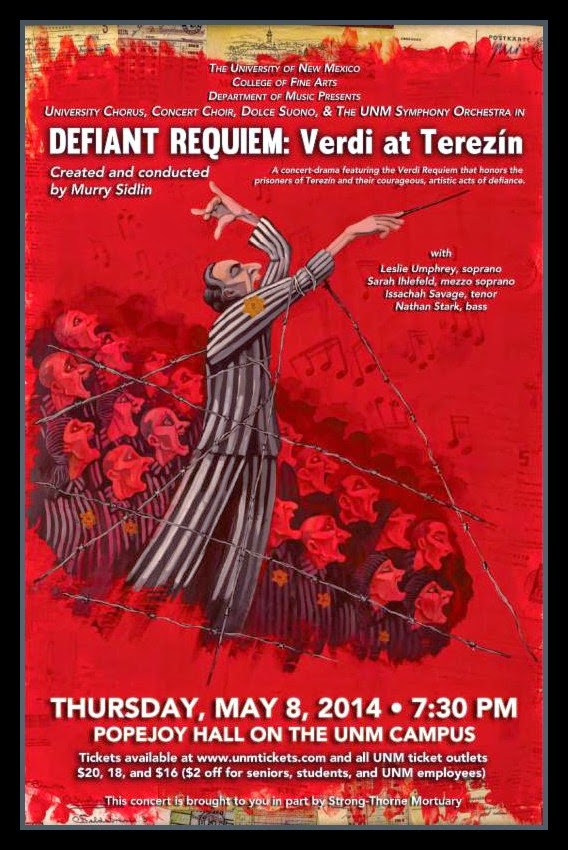 |
| Ken O'Hara from this Abq Jew Blog to G-d's ears |
Others aren't quite as sure as Abq Jew that this is the way it will end up.
Albuquerque Business First's April 25 cover story, Sweating It Out, tells a more painful story. Reporter Dan Mayfield points out that
Legislatures in the four states vying for Tesla’s Gigafactory are using a variety of strategies to woo the company. The governors of Texas and Arizona have made moves to encourage Tesla Motors to set up the Gigafactory in their states.That much we already knew. But Mr Mayfield also quotes Eclipse Aviation and Titan Aerospace founder Vern Raburn, who has disturbingly disenchanting views about the state of education in the Land of Enchantment..
Schools may be deal-breaker
Former New Mexico Governor Gary Johnson said that the new Tesla Gigafactory, if it does land in New Mexico, would need thousands of construction workers to build.
But keeping workers here over the long term will be hard.
“If New Mexico is ever to become an Austin, or a Phoenix, there are barriers,” said Vern Raburn, who started Eclipse Aviation and recently sold Titan Aerospace to Google.
Eclipse was the last large company to be successfully recruited to New Mexico. “We looked at facilities, weather, access to the Sunport. It’s a complete set of equations. We had 19 different criteria,” Raburn said.
“But the schools are a joke. I lost my best employees because they wouldn’t put their kids in the schools and could not afford the private schools.”
But Elon Musk is looking at a place where his employees will want to live. Raburn said he’s sure Musk is watching the state’s battle to confirm a secretary of education.
“But things like the battle with the secretary of education not being confirmed for three years? Absolutely,” Raburn said. “That’s obscene. There are good teachers, but the system is broken.”
Johnson, who was a two-term governor in the 1990s, is also the founder of Big J Enterprises, the firm that built most of Intel’s factory in Rio Rancho in the late 1980s and early 1990s. It’s the only factory in New Mexico comparable to the giant Gigafactory in size and scope.
How bad, Abq Jew hears you ask, could the situation be? After all, US News & World Report tells us that
The U.S. is on track to graduate a record number of high school students by 2020.That's the good news. The bad news?
That's the good news in a report released today, but the bad news is that certain groups of students - special education, low-income and minority students - continue to lag behind.
The nationwide graduation rate reached 80 percent in 2012, the highest in U.S. history, and is on pace to reach 90 percent by 2020, according to the 2014 "Building a Grad Nation" report released by Civic Enterprises, the Everyone Graduates Center at the School of Education at Johns Hopkins University, America's Promise Alliance and the Alliance for Excellent Education.
But for the majority of the states, achieving a 90 percent overall graduation rate will not be possible without significant improvements in graduation rates for these populations of students, according to the report.Let's compare New Mexico, where Mr & Mrs Abq Jew now cheerfully reside, with good old New Jersey, where both of Mr & Mrs Abq Jew's children graduated high school.
++++++++++++++++++++++++++++++++++++++++++++++++++++++++++++++++
Grad Rate Grad Rate Grad Rate Income
NJ 9 86% 75% 90% 27%
NM 48 70% 65% 77% 57%
US -- 80% 72% 87% 45%
++++++++++++++++++++++++++++++++++++++++++++++++++++++++++++++++
You may think that the high proportion of low-income students in New Mexico is skewing the results. And you would be partially right. But not completely.
Let's now compare - still using numbers from US News & World Report -
- Cibola High School, the pretty good local public high school (AP® participation rate 25%, total minority enrollment 67%) in the non-low-income area where Mr & Mrs Abq Jew now reside, with
- Livingston Senior High School, the pretty good local public high school (AP® participation rate 57%, total minority enrollment 32%) in the non-low-income area whence Mr & Mrs Abq Jew's daughter Alex the Boston University graduate was graduated.
++++++++++++++++++++++++++++++++++++++++++++++++++++++++++++++++
Ratio Readiness Proficiency Proficiency
Cibola 17:1 18.6 2.6 2.7
Livingston 11:1 55.7 3.4 3.4
++++++++++++++++++++++++++++++++++++++++++++++++++++++++++++++++
But neither picture is complete. For example,
- Albuquerque Institute of Math & Science, the #1 ranked charter high school in New Mexico (#64 in the US), has an AP® participation rate of 100% and a College Readiness Index of 84.4. But the school only has about 300 students.
- Albuquerque Academy, a highly regarded private high school, probably has a very high AP® participation rate; other rankings are not readily available. But the school charges about $20,000 (retail) annual tuition.
Let's skip over US News & World Report's National University Rankings: University of New Mexico is #181. New Mexico State University is #190. University of Maryland (for example) is #62. Boston University (for another example) is #41.
Let's instead take a brief look at the role hunger plays in New Mexico's education disaster. Did Abq Jew really use the term disaster? Yes, he did.
Rick Nathanson, of the Albuquerque Journal, reported yesterday that
NM tops in childhood hunger
For the second year in a row, New Mexico ranks No. 1 for childhood hunger, according to the Map the Meal Gap study produced by Feeding America, the nation’s leading domestic hunger-relief charity and the largest network of food banks.
With one of every three children 18 and younger in the state growing up hungry, New Mexico has a childhood hunger rate of 29.2 percent, far exceeding the national average of 18.6 percent.
Bernalillo County, which has the state’s largest population, is ranked 11th among all counties in the state, with a 25.5 percent hunger rate among children and a 16.6 percent combined adult and children hunger rate.
Since 2011, the number of children in the state classified as hungry grew from 137,720 to the current total of 150,390; during that same time period, the total number of hungry people, children and adults, grew from 336,430 to 387,100.So, Abq Jew hears you ask:
Is it time to head for the hills?
To which Abq Jew must reply:
 |
| Too late! We still love it here! New Mexico is a work in progress ... but we need to do some work before we see some progress. |


























































